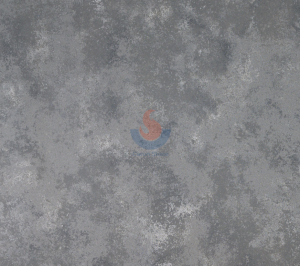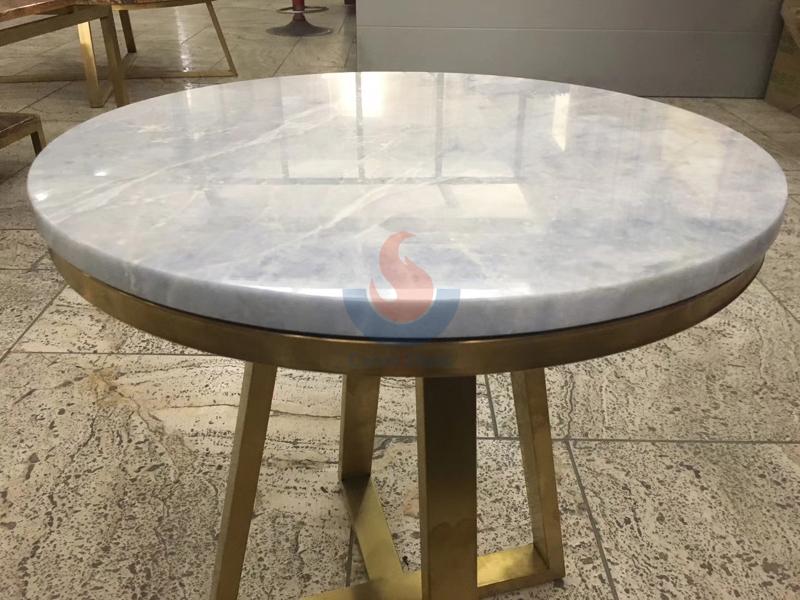In the field of architecture and decoration, marble is widely welcomed for its unique texture and elegant temperament. But even if marble is absolutely beautiful, its chemical stability and weather resistance are sometimes disregarded. With the advancement of construction technology and the complexity of the use environment, it is particularly important to understand the chemical stability and weather resistance of marble. These features of marble will be thoroughly discussed in this paper together with analysis of its performance and difficulties in useful applications.

Real natural blue onyx marble stone slab and tile for wall and floor tile from China
1. Chemical stability of marble
1.1 Chemical composition and reaction
Marble is mainly composed of calcite (calcium carbonate), so its chemical stability is directly related to the properties of calcium carbonate. In an acidic environment, calcite is prone to chemical reactions that might lead to stone surface weathering and corrosion. For instance, the acidic elements in marble react with calcite to produce soluble calcium sulfate and carbon dioxide when it is subjected to acid rain, therefore erasing the surface of the marble gradually.
1.2 Factors affecting chemical stability
Marble’s chemical stability is much influenced by its composition as well as by the surroundings. For instance, long-term dampness and acidic chemicals in the air (such as sulfur dioxide, nitrogen oxides) could hasten the weathering process of marble. In urban environments, especially industrial areas or areas with heavy traffic, the chemical stability of marble often faces greater challenges. Thus, while using marble as a building material, one should carefully evaluate the pH and pollution level of the surroundings of the construction site.
2. Weather resistance of marble
2.1 Definition of weather resistance
The capacity of a material to keep its performance and appearance stability throughout different environmental circumstances is known as its weather resistance. For marble, weather resistance covers not only resistance to wind and sun but also adaptation to temperature and humidity fluctuations. Marble’s great use in outdoor surroundings depends much on its resistance to the elements.
2.2 The impact of temperature changes on marble
Although marble has rather strong temperature tolerance, extreme temperature fluctuations could lead to stone fracture. Especially in areas with large temperature differences, the expansion and contraction of marble may cause cracks or peeling on the surface. Thus, while utilizing marble in these surroundings, related protective actions must be implemented during design and construction under proper joint design and reasonable paving technique.
2.3 Effects of humidity and precipitation
Important elements influencing marble’s weather resistance also are humidity and precipitation. When marble is exposed to a humid environment for a long time, it is easy to absorb moisture and cause changes in the internal structure, thus affecting its durability. Furthermore, long-term water collection might lead to the growth of algae and moss on the surface of marble, therefore compromising not only its appearance but also perhaps hastening erosion of the stone. Thus, frequent maintenance and waterproofing are efficient ways to preserve the weather resistance of marble in humid environment.
2.4 Pollution and weathering effects
Weathering is a common problem for marble in outdoor environments. The surface of marble can be worn down by wind, sand, dust, and other airborne particles, therefore hastening the weathering process. Furthermore negatively affecting marble can be airborne contaminants such nitrogen oxides and sulfides. Therefore, in areas with severe pollution, regular cleaning and protection measures are needed to reduce the damage to marble caused by these factors.
3. Performance and countermeasures in practical applications
3.1 Marble in architectural applications
In architecture, marble is often used in locations such as exterior wall decoration, floor paving and columns. Marble is typically treated with other treatments, including surface sealers, to raise its resistance to chemical erosion and hence improve its effectiveness in these uses. Furthermore, the application of anti-fouling and waterproof treatment techniques helps to considerably increase the lifetime of marble installed.
3.2 Maintenance and care
Two primary ways to guarantee that marble stays in good shape for a long period are regular maintenance and care. Regular cleaning and inspection of the marble surface using suitable cleaners and maintenance products will help to significantly stop the accumulation of dirt and pollutants. In addition, regular surface sealing and repair work are also important measures to protect marble.

Grey Marble Vein Quartz
Marble’s application depends critically on its chemical stability and weather resistance generally. Although marble has a beautiful appearance and a certain durability, its performance in chemical reactions and environmental changes cannot be ignored. Understanding the chemical characteristics and weather resistance of marble will help us to implement sensible protective actions in useful applications to increase its service life and preserve its graceful beauty. In the future, with the advancement of technology and the development of material science, it is believed that the performance of marble will be further improved, bringing more possibilities and innovations to the fields of architecture and decoration.





